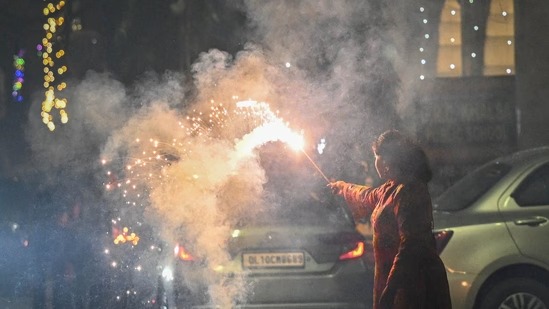Every year after Diwali, the story is repeated. Air quality indexes shoot up in ‘severe’, visibility goes down, and social media are loaded with hashtags about pollution and responsibility. But as soon as the smog settles, we move on until next year.
Our screens are flooded with awareness campaigns. Exhortations come: not to burst firecrackers or use some kind of environmental-friendly celebrations. If awareness had been the solution, then air would not have remained toxic the morning after Diwali. Fundamentally, knowing is different from changing.
The Awareness Fatigue Problem
The World Air Quality Report, 2024 ranked India among the top 10 countries in worst air quality. PM 2.5 concentration crossed 500 µg/m³ in Delhi NCR post-Diwali, almost 30 times over the limit prescribed by the WHO. And yet, public campaigns and school pledges continue to show more interest in disseminating information.
Behavioral research shows that when people are repeatedly exposed to the same warnings without tangible change mechanisms, “awareness fatigue” sets in. Citizens become desensitized. The message stops taking action.
Why Awareness Fails Without Structure
Information without infrastructure barely works. Most citizens might want to switch to sustainable habits but find no viable options-gree firecrackers are hard to find, waste segregation points are inconsistent, public transport remains limited during peak hours.
True transformation requires systems that make the right choice the easy choice. That means incentives, accessibility, and accountability-not just messaging.
From Campaigns to Community Action
To move from awareness to action, we must shift focus to community-driven frameworks.
Localized air-monitoring dashboards at the residential level would therefore go on to help track pollution in real time and coordinate neighborhood responses, like car-free days or tree-planting drives.
School-based “air clubs” might engage students directly in measuring air quality, advocating for tangible changes-trying to take what is learned into lived action.
Housing societies can also liaison with local bodies for post-celebration clean-ups, recycle green wastes, thereby converting awareness into habit.
It is when people see their effort being translated into measurable local impact-cleaner surroundings; better visibility, fewer respiratory cases-participation follows willy-nilly.
What Brands and Businesses Can Do
For corporates, therefore, sustainability messaging has to be more than mere seasonal CSR campaigns. In fact, a Deloitte 2025 study brought out that as many as 73 percent of consumers would prefer brands which can demonstrate long-term environmental commitment over symbolic gestures in the short term.
Brands can lead by:
Reward green behaviors through recycled drives, refill programs, or urban tree planting within loyalty or employee engagement frameworks.
Co-sponsoring, along with civic authorities, local air quality-related initiatives.
CSR in that sense is not some duty, but a shared responsibility regarding public health.
Citizen Science and Data-Led Accountability
Public participation in a bottom-up democracy is steeled with information. Community-based AQI sensors, open-source dashboards, and citizen-reporting tools provide a fillip for mapping hyper-local pollution patterns.
This is not to say that cities like Indore and Pune, which have already initiated certain pilot programs in which citizens crowdsource pollution data to inform municipal action plans. Transparency begets trust, and trust drives compliance. You see, when valid data is shared and shared in real-time, they become more disposed of their own to change behaviors.
The Call of Shared Responsibility
Clean air is a public good, not an individual accomplishment. The air crisis post-Diwali required a new playbook-one which combined policy participation with technology. Governments need to tighten the noose on industrial emissions and waste burning; brands need to embed sustainability into their business models, and more so, citizens need to internalize eco-friendly practices beyond festivals.
For behavioral change, what is needed is repetition and reinforcement-more than anything; it is shared ownership. Awareness campaigns needn’t end with slogans; rather, they need to begin with systems that let people act. Till clean air becomes a reality; awareness alone would only be noisemaking in the smog.
Views of the author are personal and do not necessarily represent the website’s views.



